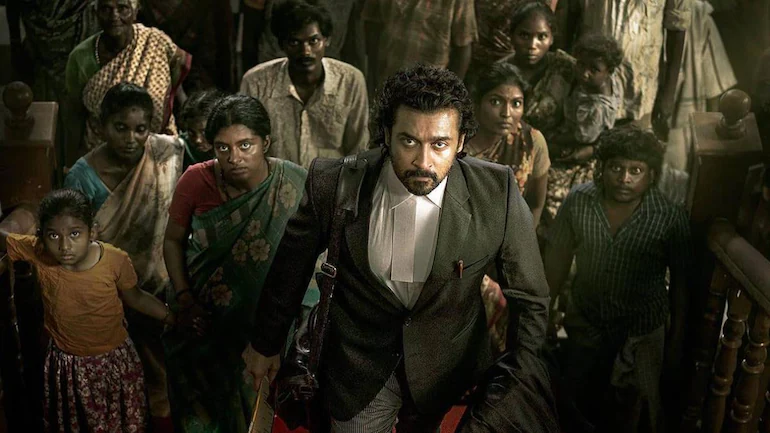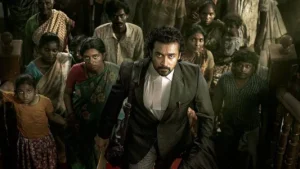
Rajakannu and Sengani are a couple from Irular tribe in Tamilnadu. The main occupation of the Irulas has been: snakes, rat-catching and honey collection, over generations. Like the rest of the people of their tribe, Rajakannu and Sengani are also landless labours and work at the landlord’s fields. They catch rats and snakes to prevent the infestation of crops. Rajakannu is one day called to catch a snake that has entered the upper caste Sarpanch’s house. The next day there is a theft at the same house, and everyone blames Rajakannu. The police took Rajakannu’s family in custody and eventually Rajakannu too and started torturing them and asked them to admit that they committed the crime.
The film shows the ugly face of our society and how upper caste people have historically demonised several marginalised castes, tribes and genders. This has happened historically so much that even Britishers had put several castes like Chamars, Lodhi, Bowreah, Budducks, Bedyas, Domes, Dormas, Gujjar, Rebari, Bhar, Pasi, Dasads, Nonias, Moosaheers, Rajwars, Gahsees Boayas, Dharees, Sowakhyas in the category of “Criminals by birth”. In Madras Province itself, more than 237 castes and tribes were categorised as criminals by birth. People from these communities not only face untouchability but are also the usual suspects if any sort of crime happens in the locality.
When Rajakannu disappears from police custody and his wife Sengani is told that he eloped, her search for her husband and justice starts. Eventually after asking for help everywhere and trying everything she meets Advocate Chandru who is a human right’s lawyer who finally takes her case.
The film is not just a courtroom drama, it is the struggle of several people from marginalised tribes, who are left behind by the system. The system is rigged to favour certain communities and is actively working against marginalised tribes and castes. In the court, the defence lawyer made the same petty argument again and again that since the victim is from Scheduled Tribe they are trying to politicise the issue. The truth is that the cases happen with people from ST/SC communities because the system is functionally against them. From police to local authorities, casteism exists.
The film shows a lot of these issues correctly. How Advocate Chandru investigates the case and even threatens to leave the case when he feels he has been lied to, how the police try to intimidate Sengani. How the political powers come in action to prevent people of their own caste. For most parts, the film deals with everything quite sensibly. Even Surya has done a remarkable job as Advocate Chandru. He is a superstar but in this film, he had no scope of being the grand superhero he usually is. His performance is subtle and to the point. In his last film Soorai Pottru also Surya had done a remarkable job as an actor and broke his ‘hero’ image.
The film has its flaws too, the amount of violence and traumatic scenes it has shown, it almost starts feeling like trauma porn. I understand the violence is real, but do we really need to show this much graphic brutality for people to understand that police brutality and caste atrocities are this cruel? Will people only get sensitized about the issue if it is brutal, brutal violence? The portrayal of people of marginal communities is still almost similar to that of the character ‘Kachra’ from the movie Lagaan, helpless, depending on a saviour and still being thankful for the bare minimum help they get from others. The worst was the artificial skin darkening of Lijo Mol Jose to ‘fit the character’ which again reaffirms the stereotype and image of the marginalised communities and validates it in the process. I feel, there was absolutely no need for that. The film is based in 1995 but casteism still exists and going back to time to portray it feels ironic and in fact a stereotypical representation that really needs to be broken. And which is being challenged by filmmakers from the marginalised castes and tribes in movies like Karnan and Sarpatta. And that’s exactly why we need more filmmakers from the marginalised castes and genders so that the portrayal is not from the saviour gaze and hence closer to reality.

